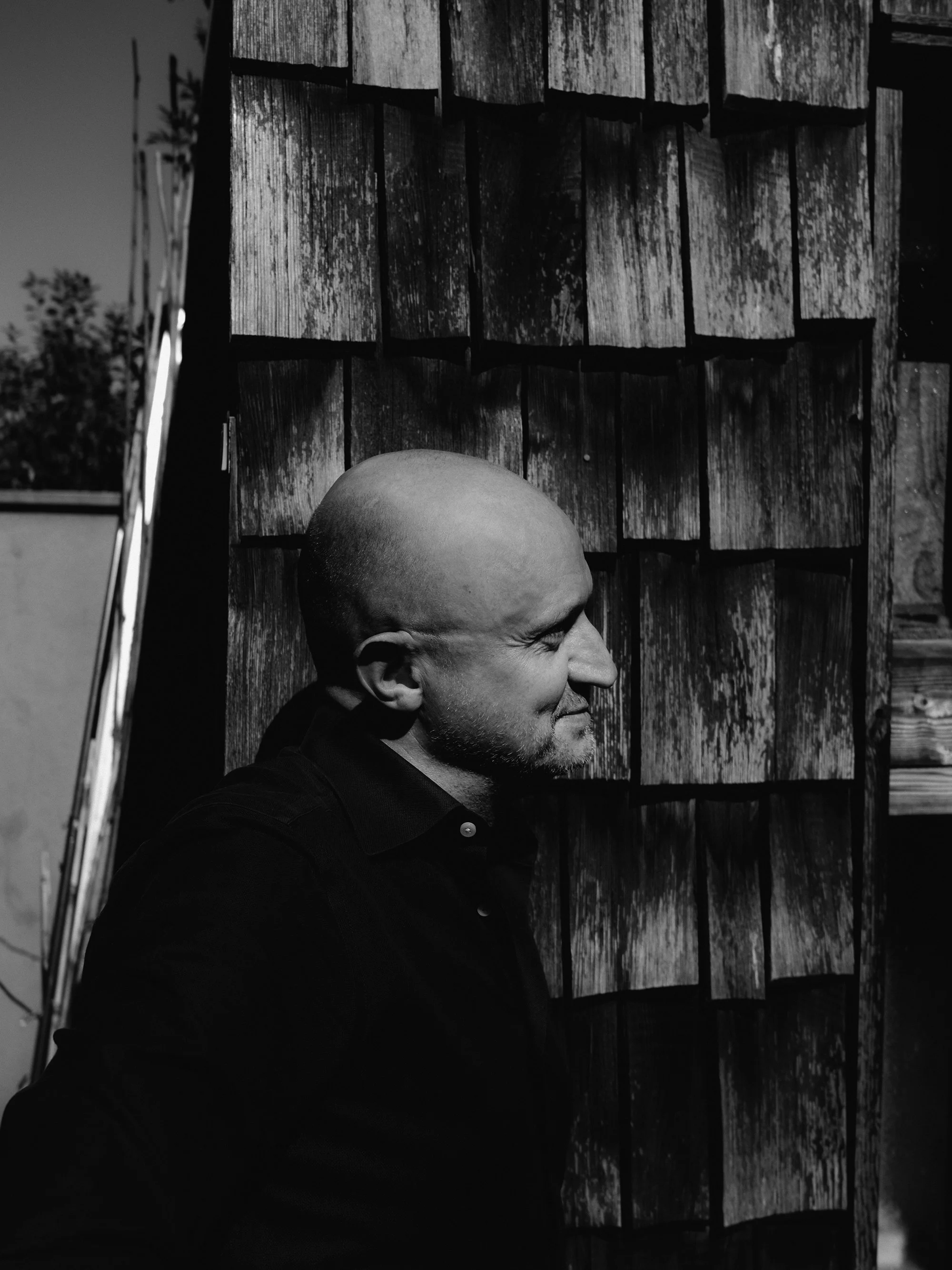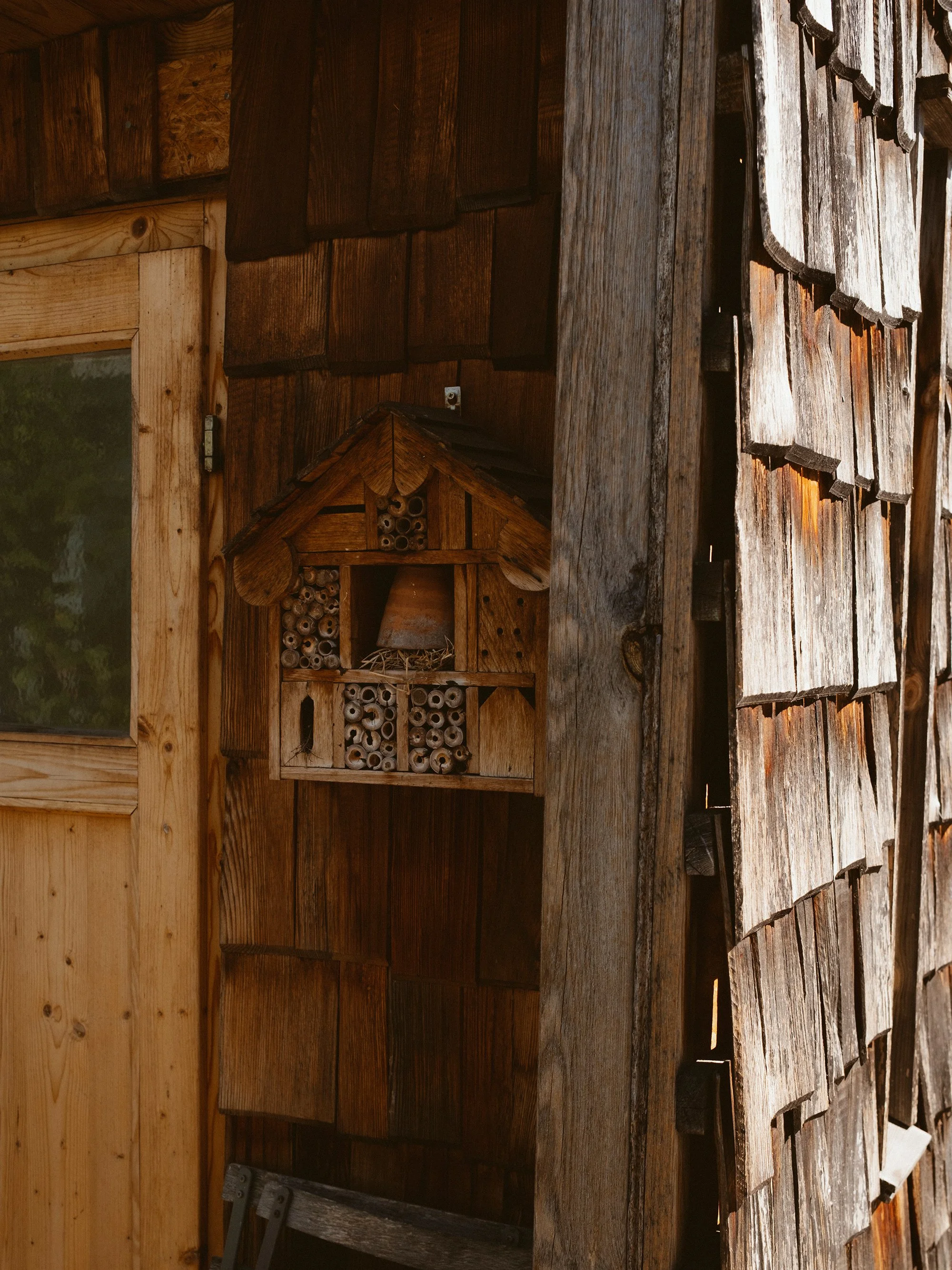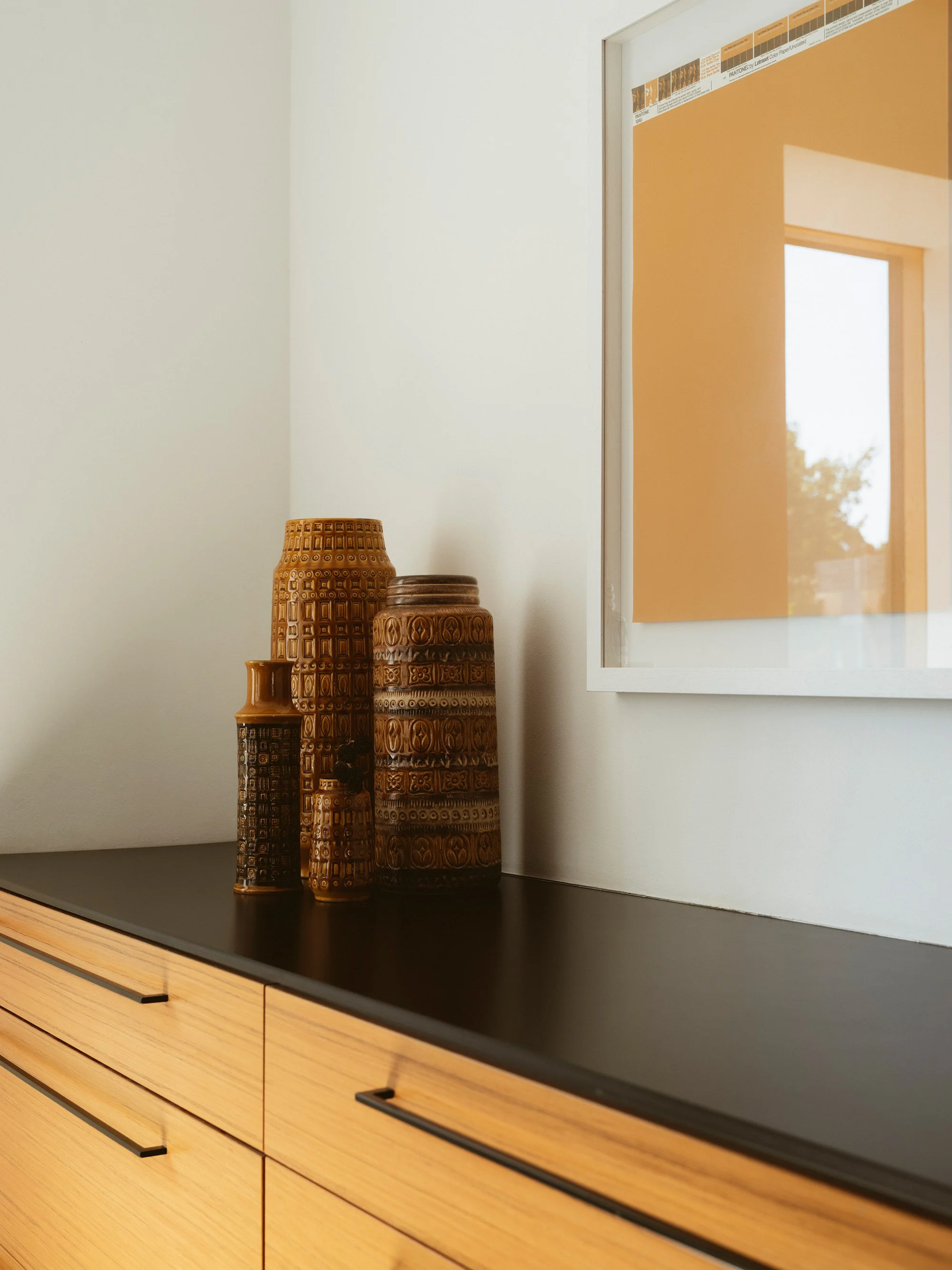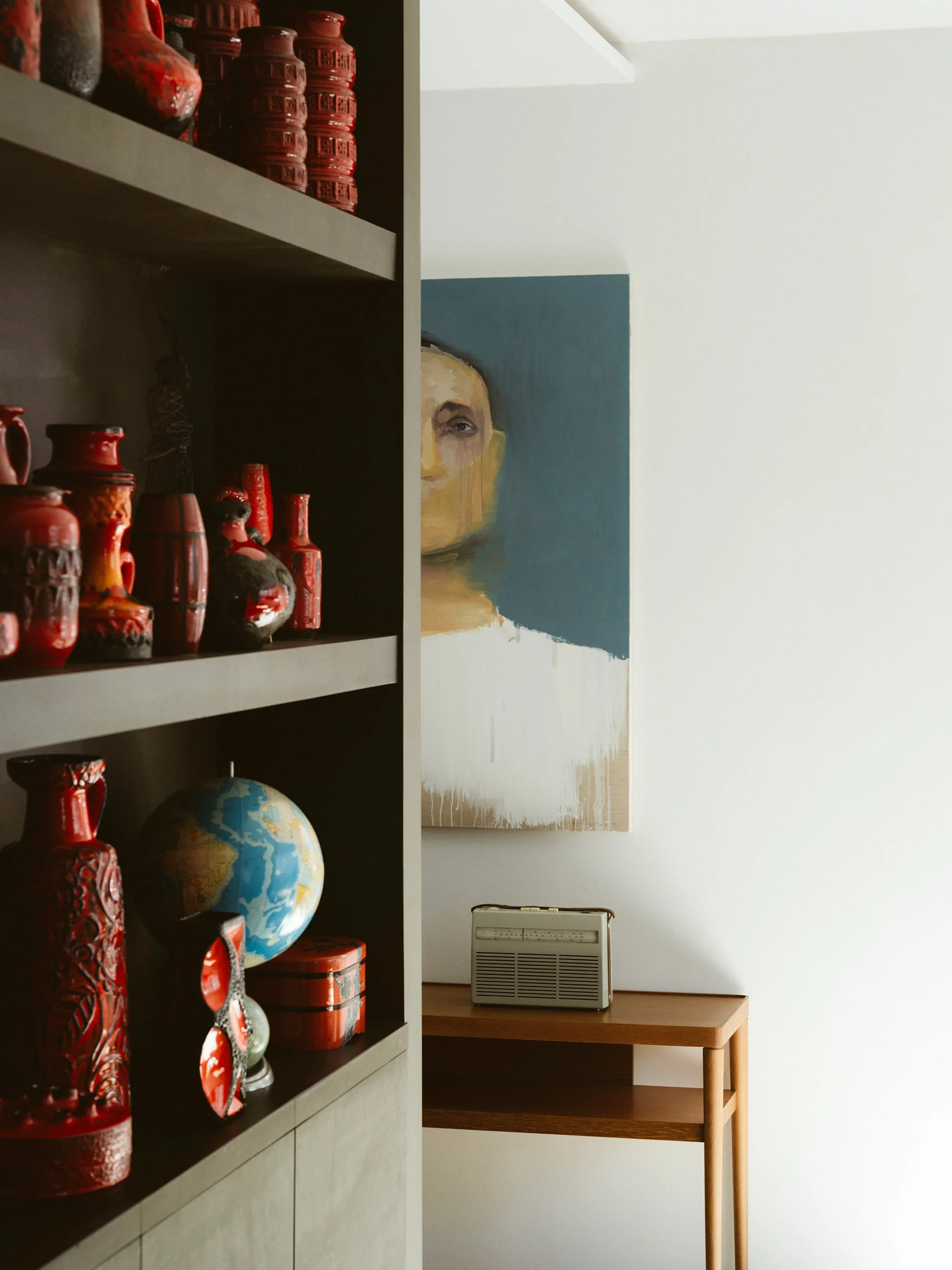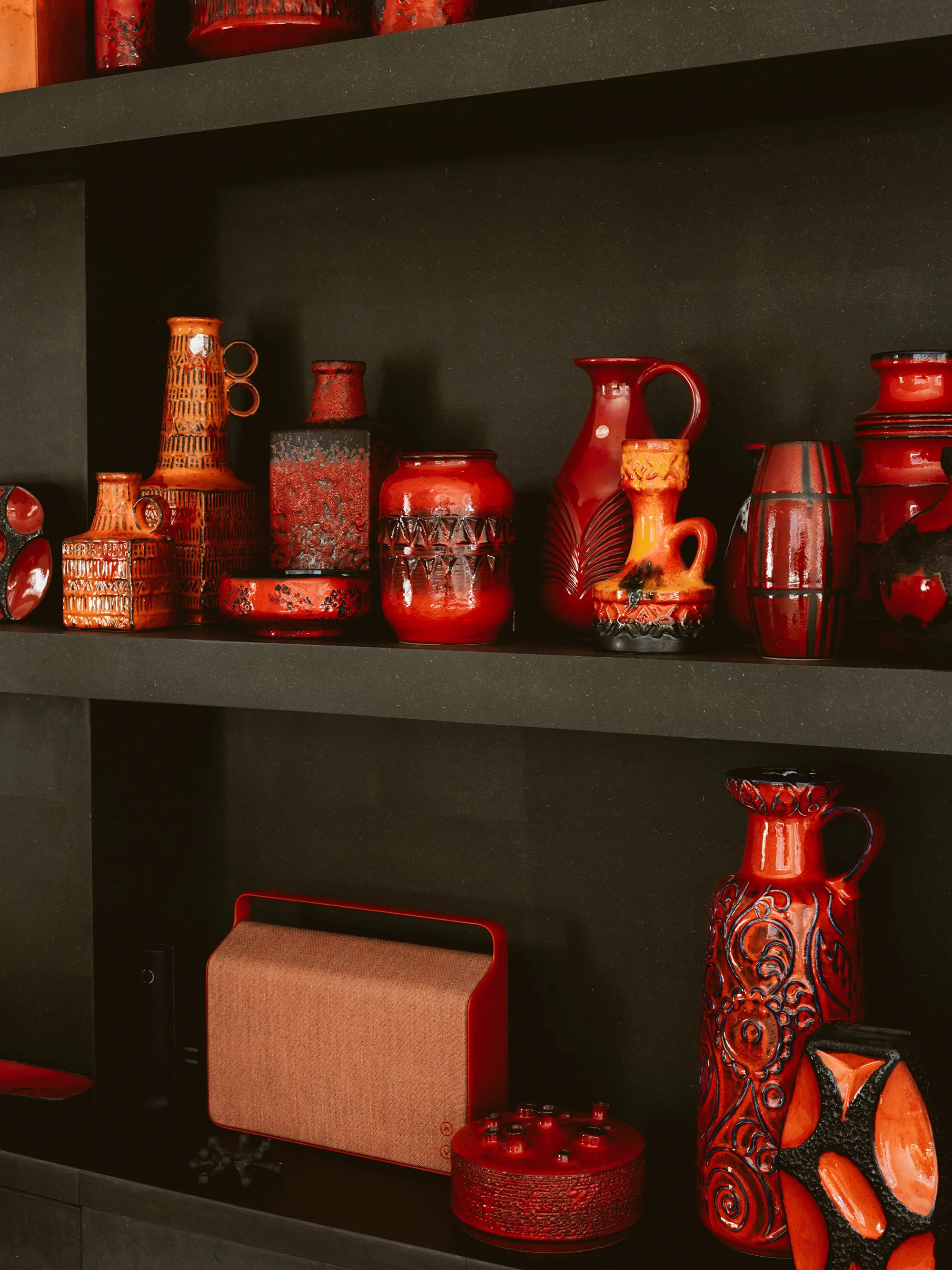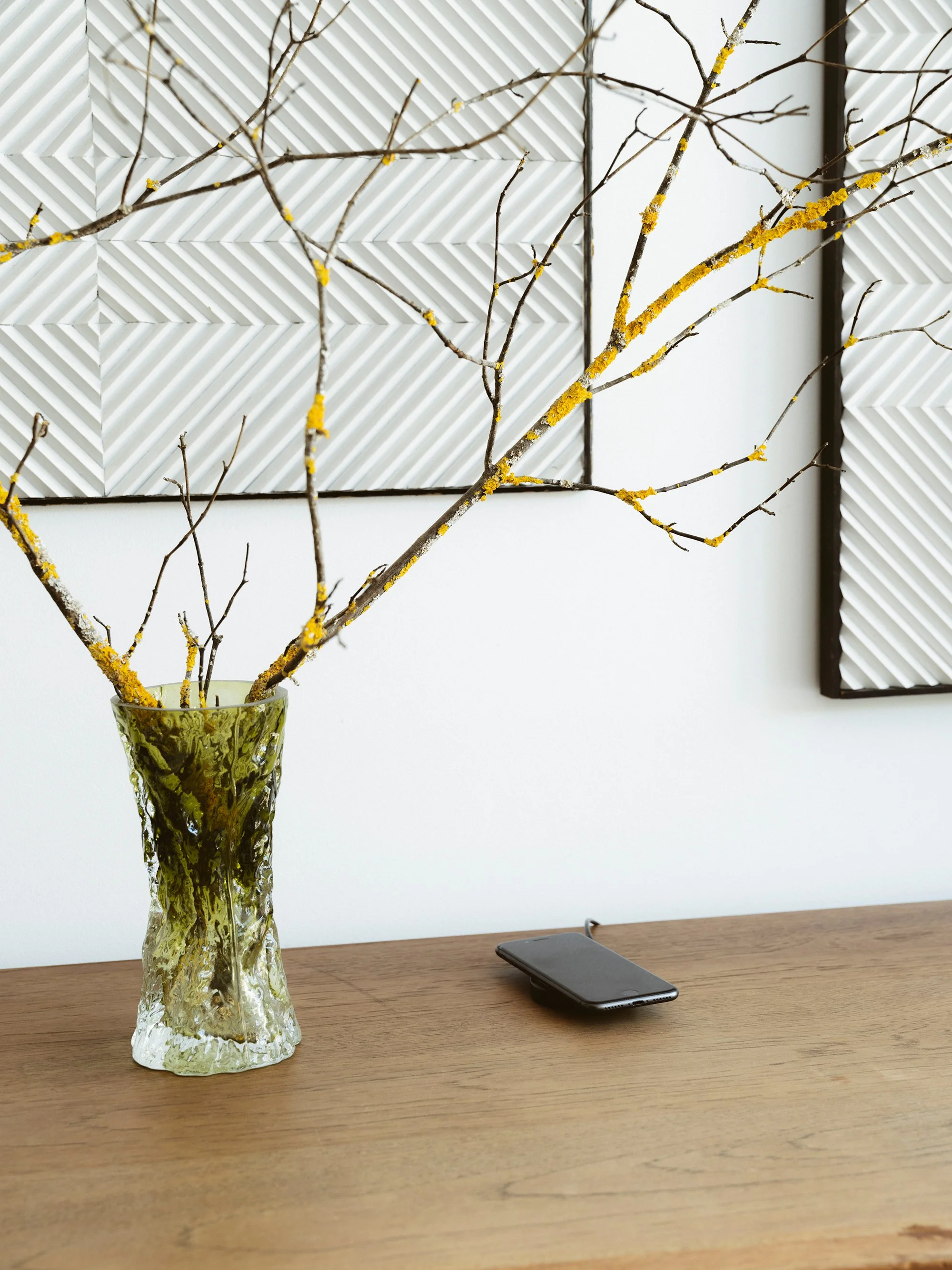The Soul of Motion
The Soul of Motion
A conversation with Jo Stenuit
Interview by Andy Carrera
Photographs by Volker Conradus
No matter where you live, transportation plays an important part of your life, shaping your access, commute and local community. For many, however, the car is more than just a method of transportation; it represents freedom, status and excitement.
Andy Carrera, a British-Italian industrial designer, is a third-generation automotive enthusiast, whose grandfather worked for Fiat, and father for Nissan. For this in-conversation, Andy met with Jo Stenuit, Design Director at Mazda Motor Europe, to talk about craftsmanship, Japanese design philosophy and the future of cars.
Andy Carrera: Letʼs start with the first thing. I was looking into your background and what you were doing. I was surprised that you were a product designer originally. So please tell us about your journey and how you went from product design to automotive.
Jo Stenuit: Haha, how much time do you have? Well, basically, I was not such a good student. In all the things where we had to be creative, I was doing really well ... so I told my parents I wanted to be an artist, to which they said, “No, no, no, please donʼt do that”. Luckily, my brother was studying architecture and he saw something called “product design” which my parents advised me to do after finishing high school. It was basically engineering studies plus design, and very Bauhaus based; everything that looked good was suspicious, there was nothing about form, it was all about function. When I finished, I still felt like I wanted to do car design. I applied to different schools, sent my portfolio to the Royal College of Art in London with the idea that my chances to get in were minimal. But I was lucky. That was a dream that I thought would never happen, because of my attitude of ʻI am only from Belgiumʼ. As a student and I tried to do illustrations for car magazines, but when I saw what the English professional guys would do my confidence got a big blow but I tried anyway. And here I am, 30 years later.
AC: Well, I think it was quite successful.
JS: The product design thing in the beginning was difficult in the car industry because I wasnʼt the guy that could draw the best, but the knowledge of product design later in the career became more and more important. Design thinking, or how to organise something, or material knowledge, or anything for talking to engineers or marketing people.
AC: And Iʼm sure bringing that form versus function question is also very helpful. That brings us quite nicely to the next question — where do you find inspiration? Where do you start the process for form, colour and material palette.
JS: To clarify, I donʼt design so much anymore, thatʼs my team. I have my personal inspiration, very often thatʼs about interior architecture and furniture and not so much about cars, maybe old cars. But the inspiration for us comes from what we know from Japan; we are very focused on our identity as a Japanese company. Itʼs a very big part of the inspiration: the language, pictures, Japanese philosophy.
AC: Picking up on that aspect Japanese influence, I understand that there are a number of Japanese principles that Mazda uses to underpin the design choices, and what you highlighted as something of a philosophy and aesthetic. ʻMaʼ, ʻkaichoʼ, ʻhachoʼ and ʻmusubuʼ ... Iʼm definitely not pronouncing that correctly.
JS: Actually Japanese is easy when it comes to pronunciation.
Ma is a concept we often use on the interiors; ma is about empty space. If you come into the traditional Japanese house — itʼs basically empty, which is a bit strange, but also multifunctional. If only one object is in the room, then that will draw all the attention, or if thereʼs nice scenery to be seen outside through the window, then that is framed as well. So, ma is about giving focus and tranquility when you enter a room. It is quite interesting also when the Japanese do flower arrangements — they not only talk about the flowers, but also about the importance of the emptiness between flowers as well. Thatʼs the kind of thinking modern car design is maybe missing, because a lot of new car designers tend to overload designs. That, to me, is not good design, thatʼs not the purpose of design. We are trying to do the opposite.
And then, if we get into Dieter Rams: you should understand the design. When you get into a car you should understand what it means, what kind of car it is, how it works. It should give you the feeling that you are controlling the car as well, and itʼs not the car thatʼs overpowering you.
AC: Itʼs interesting that you mention Dieter Rams, and how he is an influence in your work. Are there any other designers that are particularly influential on your practice and perhaps at Mazda more generally?
JS: Dieter Rams for me is personal, because of my background in product design and also my background as a collector. But itʼs that thinking, what are the ten principles of design. When I saw the documentary by Gary Hustwit on Dieter Rams, I got emotional, because for me, the ten principles of good design by Dieter Rams, also point to what we do every day at Mazda. Dieter Rams did it in a more mathematical, industrial way. At Mazda, we do it in a more human, natural and emotional way through our design philosophy, called kodo. Itʼs very broad and we can move within that design philosophy, but within it thereʼs always a core, and kodo is the soul of motion.
When we get a presentation from the design studio in Japan, we get these concepts and they explain them to us. We almost have to translate them, so when I explain ma for example, itʼs done from the viewpoint of a European. Kaicho, as I have understood it, is about combining materials in a harmonious way. We use the interior of a Japanese house as inspiration, where you have many materials like straw and wood and different textures coexist, but as a whole, it works together. Musubu is another principle we use as inspiration; itʼs a very general term for binding, from the way items are made for fashion, to the way the Japanese wrap their food in the morning.
AC: I wanted to ask you about designers and their tools. More and more, things are moving towards becoming digital. How do you keep in touch with the material aspects of the process, especially because in the end, with a car, the goal is ultimately to make a physical object?
JS: You touched upon tools. We use clay modelling and modellers who make them like sculptures, but itʼs frequently replaced now with designers having tools like Blender, which is super easy to create 3D volumes with. Itʼs not going to change car design, but it is changing the process. It goes really quickly into 3D, whereas before they would spend a week on the rendering. Iʼm watching whatʼs happening with AI, the tools that create design cars for you. Itʼs a bit scary, but it will happen.
AC: I heard that CAD used to not be a thing. But then suddenly it was, and it was used in the industry very widely. It became the way of actually making your idea concrete.
JS: I was part of that wave when I started back in 1996. I learnt digital 3D modelling at the RCA on my own, and that was my strength, because nobody else could do it. Now, Blender is basically a standard, because it is so easy to use, and the tools are there and accessible to everybody; itʼs kind of democratising 3D-modelling now.
AC: Speaking of digital modelling, the pandemic forced a lot of us to live online, and I saw that Mazda created a car for the video game ʻGran Turismoʼ. What are the opportunities of designing in that space?
JS: As I understand it, for younger generations the value of the digital world and the real world is similar. Imagine you have a real MX-5, and then imagine having the same car in the digital world, where you can extend the experience. With the pandemic, it caused us to switch to digital and virtual reality very quickly.
Weʼre really experimenting now with how we can use it in a design process. Instead of building, for instance, full-size interiors, maybe we can get a first idea in VR, and then move forward if weʼre happy. But this also goes for presentations to Japan, because we are far away from each other and travelling costs a lot. Now we can sit in the same digital world, looking at the same interior, and discuss.
AC: Yes, but there is something about seeing something with your own eyes that you donʼt quite get with a render or an image.
JS: Of course, I donʼt think we can use everything in VR. People still want to touch things. If you go to a motor show, people get into the car and start touching everything — it seems to be important We also always talk about craftsmanship and, the funny thing is, we were interviewing for a Digital Modeller a week ago and one of the interviewees called himself a “digital craftsman”. Maybe in the way a Japanese craftsman can do something incredible in wood, we can also have digital craftsmen.
AC: Especially when you move into the more free-form sculptural things ... Your point about craftsmanship perhaps leads us to my next question. Many people outside the automotive industry still think that cars are only assembled by machines. When we see it on television, thereʼs always big robotic arms assembling cars. How would you say Mazda puts craft and craftsmanship back into the process?
JS: Actually, these days quality is higher with a mass production object than with a handmade object, unless you spend ridiculous amounts of time. For us handcraft comes into the design process in the sense that we learn from craftsmen, and we look at how they work, and we work in a similar way: building up skills, re-doing stuff a lot of times, until we get to a point where we are happy. But while we could be inspired by a craftsman and a certain type of stitching, it doesnʼt mean that we have 100 old ladies in the factory stitching our panels. The difficulty then is to find the suppliers who can translate what we learnt from craftsmen into a mass production process. Thatʼs the difficulty.
AC: Itʼs always funny when you want to go to get something mass-produced and you have the sample in your hand, youʼre like: “I want this”.
JS: Yes. What people sometimes donʼt realise is that, for instance, itʼs super difficult to develop a paint, itʼs very technical. So sure, you can go as a designer and say, “I want this”, but itʼs going to take a long time to develop it. I had a really interesting conversation with a Japanese guy who lives in Düsseldorf and does shibori; he does everything by hand, with pigments. He said that Japan is the land where the hand is very much respected, which often also means itʼs not always exactly the same, and it becomes a bit more personal.
AC: Thatʼs definitely a very powerful idea. Even if itʼs not always directly the case, just the idea that someone has touched something and now youʼre touching it is ...
JS: When we talk about the kodo (the soul of motion) I like to think we put our soul in the product, and we hope we then touch the soul of the customer who buys our cars, like a transference of passion through the car almost.
AC: I can see that. As a designer, something that you come to see is that any object thatʼs designed — or even not designed — can communicate something about the person who made it. Whether people realise it or not, I think you always internalise or get this feeling from a designed or not designed object. In this line of thinking, is there an object or product you would love to redesign, and why?
JS: Iʼve never been a fan of supercars, so my dream was never to design one. My dream, and everybodyʼs dream at Mazda, is to design the next MX-5, because itʼs very specific and it has a very specific type of core, which is difficult to design around. But itʼs such an interesting project, not only the design, but the product and the community that it created. Iʼm going to talk to Tom Matano in a couple of weeks in Amsterdam — he is the designer of the very first MX-5 — and heʼs still talking to people about how it was and how it builds a community. Thatʼs a product thatʼs not just the product.
AC: With self-driving cars, is it possible that the driving experience maybe becomes less important, and itʼs more about the interior?
JS: Yes, definitely. To me, it would be a completely different product. It wouldnʼt be a car, although it would be the perfect automobile, because it will automatically drive you around. Itʼs almost like public transport in the end, but more personal. The activity that you do in the car is different, so the layout can be different, the atmosphere can be different. I saw an example last week, by a Chinese company. It was interesting because it was autonomous driving, but it still looked like a car and I just didnʼt get it! That just means that we are still at the very, very beginning of designing for autonomous vehicles.
AC: I went to a great museum in Turin — Museo dellʼ Automobile — itʼs really funny to see the first cars, which were obviously just a horse carriage without the horses; itʼs an interesting parallel. With the role of the car for future societies shifting, where do you see this going for Mazda? The car of the future — what place will it have in our lives?
JS: I think in the future Mazda will still make cars for people that like driving, it is just that in 20 years people might point at you when you drive a car yourself! But I love old cars. I love the fact of being in charge of something that moves you. I still find it fascinating.
AC: Yes. Thatʼs also quite nice in that the car of the future can also be about looking back, in some sense.
When someone buys, maybe specifically the MX-5, what does that represent and what are they looking for?
JS: It depends on the person, and it also depends on where you are in Europe. When I moved from Belgium to Germany, I noticed that in Belgium you get born, they say, with a brick in your stomach. You have to build a house, and so the house is more important than the car. When I came to Germany, I noticed they would be living in a small house but have a huge car out front — for them, the car was more important and it was very much a status symbol. A car can also become a space where you can be yourself or you can be relaxed. When I lived in Japan, when I would cycle along the river, I noticed people sitting in their car there. It was mainly young people sitting in the front with these big screens; they were watching a movie because they didnʼt have the privacy at home.
I still think it partly communicates who you are. I have more than one car and depending on which one I drive, I feel different. I have an orange MX-5, for when I feel like I want attention. I also have a bus, and that gives me a completely different feeling and I look different in that car as well.
AC: I guess it can be a bit like a fashion, where for many people clothes are purely functional. But it also can be a route of self-expression and of importance to your identity. I think there is something special when you find an object that connects with you, where that connection is immediate and so powerful. Going back to that notion of ʻkodoʼ, the soul of motion, and trying to touch someone.
JS: And thatʼs why, since more than ten years, we donʼt do design clinics anymore, because that kills the soul of a design. We donʼt do models and show them to customers and then ask, is it good or not? No. Weʼre the designers.
AC: Something that I wish the wider design industry would do is the creation of concept cars to embody a vision of the future. How have you seen the role of the concept car evolve over your career?
JS: Iʼm not sure if it really evolved. It was always a showcase of new design language or new technology, how it could be expressed. And, in a sense, a tool to build up the brand, to get people excited. By the time the production car comes, they have kind of forgotten about the show car, even if at the time it got them really excited.
Our latest show car was the Vision Coupe, and it just blew peopleʼs mind. We took it to Italy, to the Concorso dʼEleganza Villa dʼEste, twice. And, with the Concorso dʼEleganza, the people who come there are the guys who donʼt own one but twelve super sports cars. And when they saw our concept cars they said, if you build it, Iʼll buy it straight away. And I thought: okay, well, weʼre just a small company from Hiroshima, you know, that shy, little company. But we managed to somehow touch the soul of people who really love cars.

